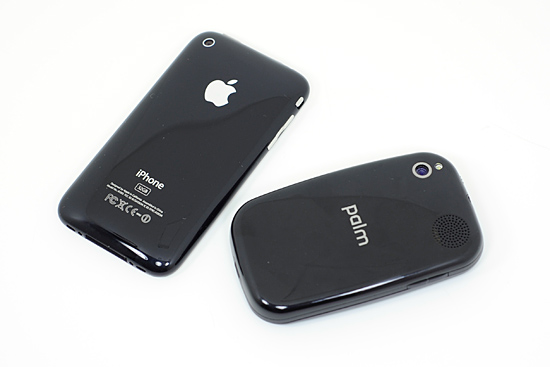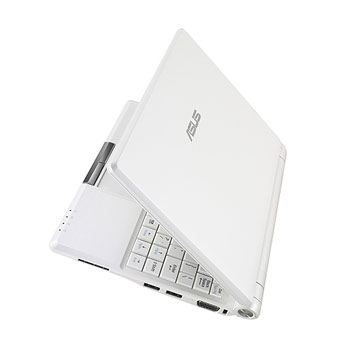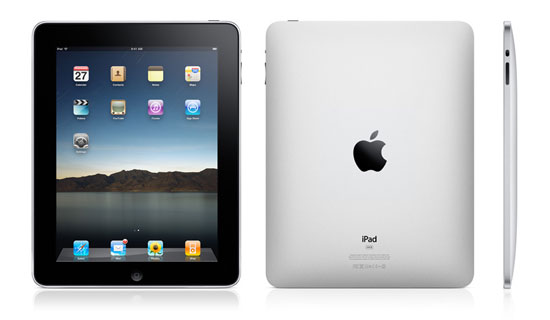The Apple iPad - Anand's Analysis
by Anand Lal Shimpi on January 27, 2010 5:00 PM EST- Posted in
- Smartphones
- Mobile
About a decade ago Mike Andrawes and I kept hoping someone would come out with a device that would make surfing the web on the couch easier than it was. Mike took the notebook route. He kept buying (or stealing from me) notebooks that were cooler, thinner and lighter while still being a notebook, for the purpose of browsing the web.
I took a more extreme route. I tried ultraportables. I bought a Sony PictureBook. It had a Transmeta Crusoe processor in it, which was horribly slow but gave me the form factor and battery life I craved. I put up with a ridiculously impractical screen just to get something small to browse the web and do work on.
Matthew Witheiler, another AnandTech veteran took a different path. He embraced the tablet PC. Matt became our Tablet PC reviewer on AnandTech as he searched for the perfect device. Unfortunately, he never found it.
None of us did. Today we all went back to the tried and true device: the notebook. The iPhone came along and gave us a revolution in the smartphone space. Ultimately it and the devices that followed just complemented our notebooks - sometimes with a new level of frustration as we were now at the mercy of wireless carriers and ridiculously slow SoCs.

The smartphone revolution gave us some great devices
History likes to repeat itself, and that’s what we’ve seen happen over the past two years. The introduction of the netbook brought the journey full circle. People wanted a cheap, light, portable web surfing and light work device - the netbook did just that.
The keyboard and screen issues have been mostly solved. Performance still sucks and part of that is due to the fact that there are no good netbook OSes that are optimized for the level of performance a 1.6GHz Atom can deliver. Most OEMs ship some variant of Windows on these devices, and with less than 2GB of memory and a single-core in-order CPU, that’s just too much to be fast.

Back to ultraportables again
There’s also the issue of storage. Netbooks desperately need solid state storage, but a single 2.5” SSD is often over half the price of a netbook itself. Pair up a slow CPU with not enough memory and a really slow hard drive and it’s not a good combination.
Microsoft, Intel and Apple have all taught me one very important lesson over the past 13 years: if you’re going after a new usage model, you need new technology to tackle it. For Microsoft and Apple that meant a new UI with Media Center and the iPhone. For Intel it meant a brand new microarchitecture optimized for power efficiency. First with Banias (Pentium M/Centrino) and then with Atom.
Netbooks, and to a greater extent tablets, eReaders and smartbooks, are going after new usage models. These aren’t notebook replacements, they are a new category of device designed for a different usage model. The one thing they’ve all been missing is the perfect combination of hardware and software to deliver the whole package.
The one thing Apple prides itself on is doing just that. As one of very few one-stop hardware/software makers, it has the ability to tightly couple UI with physical design. We saw it manifest in its greatest way with the iPhone, and now Apple (or perhaps the media covering Apple) is attempting to recreate the magic with the iPad.

The final frontier?
The device doesn’t ship for another 60 days, but there’s a lot to talk about based on today’s introduction alone.










155 Comments
View All Comments
- Thursday, January 28, 2010 - link
Just another revenue stream by zonkie, 17 hours agoWhat Apple is doing with the iPad is pretty smart.LOL
asH
zonkie - Friday, January 29, 2010 - link
It's smart because they've created another item that makes you purchase things you wouldn't normally AND you have to do it from them.ltcommanderdata - Thursday, January 28, 2010 - link
http://www.brightsideofnews.com/News.aspx?id=1117&...">http://www.brightsideofnews.com/News.aspx?id=1117&...It'd be great to find out more about the iPad's GPU. Bright Side of News is reporting that it might be an ARM Mali 50-Series which doesn't make much sense seeing that the Mali-55 is only an OpenGL ES 1.1 part. Given Apple's prior experience and financial backing, a PowerVR SGX chip is most likely, probably the often rumoured SGX 545.
And I wonder how much RAM the iPad has. 512MB seems reasonable, although given the extra room and low RAM prices, 1GB is quite doable.
Anand Lal Shimpi - Thursday, January 28, 2010 - link
I seriously doubt it is the ARM Mali. From what I've heard it's nearly 100% that the iPad uses a PowerVR SGX. Remember Apple owns nearly 10% of Imagination Technologies. To not use one of their cores seems hypocritical :)Take care,
Anand
Mike1111 - Thursday, January 28, 2010 - link
512MB sounds right. Especially since there's no multitasking.ltcommanderdata - Thursday, January 28, 2010 - link
Personally, I think multitasking is still coming with iPhone OS 4.0. With the new accounting rules, hopefully major OS updates will be free for the iPad just like they are with the iPhone.synaesthetic - Wednesday, January 27, 2010 - link
I really thought this thing was 80% useless at first.I didn't expect it to have support for rendered soft subtitles, which already killed the device in my eyes as a media player.
But no support for the MKV container format?
No support for h.264 decoding above the median profile? And I'm guessing it won't support AVC encodes with more than 8 or so reference frames, either...
I'm convinced now that the iPad is 100% useless. But of course Apple will sell a bajillion of them.
sprockkets - Thursday, January 28, 2010 - link
Matroska is only used by open source nuts and that's it. The rest of the world uses the official standard mp4 container.The only advantage of HP vs. MP is 8x8 transform and nothing else. It buys you very little in quality/file size. I've tested it myself.
Limitations of # of reference frames should not exist; ie all devices should support the maximum 16 supported by MPEG4-AVC.
Besides, where do people get those nice 1080p mkv files from, eh? At least unlike some other ppl I know in the smaller form factors (that's you Cowon), Apple supports H.264 from top to bottom.
OCedHrt - Wednesday, January 27, 2010 - link
I'm very interested in some kind of linux variant OS for this kind of hardware running on the Sony X series. It's the same weight and thickness with a larger screen and faster(?) processor and also has a multi-touch display. Just that it is not in a tablet form.Candide08 - Wednesday, January 27, 2010 - link
The Apple tablet does not multi-task. This is a serious flaw.It also does not plat flash on the web another serious flaw.
Add in a lack or removable media and I wonder about the usefulness of this device.
The OS and multi-touch interface are the strong points for this and the iPhone, but need to be developed to really be revolutionary.